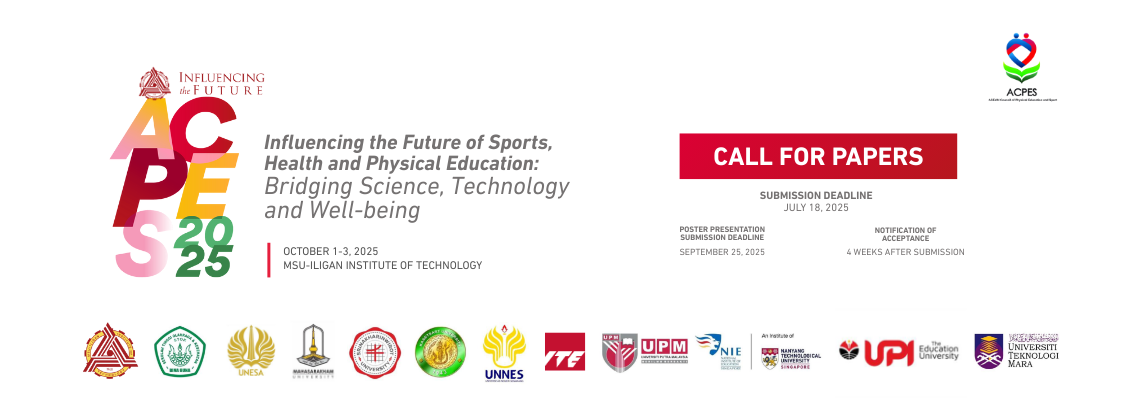Conveners
Sports Management, Policy and Ethics
- Monera Salic-Hairulla (MSU-IIT)
The purpose of this study was to evaluate the impact of combined plyometric and weight training on Shot Put performance among intercollegiate male athletes over a 12-week training intervention. Thirty-two male students, aged 21 to 28, from Dr. Sivanthi Aditanar College of Physical Education, Tiruchendur, participated in the study. The intervention involved a structured training program with progressive intensity levels ranging from 60% to 80%, assessed at three key points: before, during, and after the 12-week period. Shot Put performance served as the dependent variable, while the timing of assessment acted as the independent variable. Data were analyzed using descriptive statistics and repeated measures ANOVA with a significance level set at 0.05, utilizing SPSS software. Post hoc tests were conducted when significant F-values were observed to identify the stages with notable performance differences. The results showed a consistent and statistically significant improvement in Shot Put performance, especially in the second half of the training period (weeks 6–12), as compared to the baseline and initial phase (weeks 1–6). These findings underscore the effectiveness of training cyclicity, neuromuscular adaptation, and the role
of eccentric-concentric muscle contractions in power development. The study concludes that a combined plyometric and weight training approach, when applied with proper progression, significantly enhances Shot Put performance in collegiate athletes.
Abstract
The Special Program in Sports (SPS) plays a crucial role in enhancing the physical, social, and academic development of students, particularly those with a strong interest in athletics. This study examined the challenges faced by teacher coaches in implementing the SPS in Lanao del Norte Division for the 2024-2025 school year. The participants consisted of six teacher coaches, six school administrators, and six learners. They were chosen through a purposive sampling technique. An Interview Guide was used in gathering the data. Yin’s method of data analysis was employed in analyzing the collected data. The data gathered yielded the following main themes: 1) institutional and instructional barriers in special programs in the implementation of the sports, 2) academic, time, and motivational pressures, 3) navigating dual roles through time management, 4) enhancing learner satisfaction through support, motivation, and safety, 5) institutional and structural support systems and holistic professional growth and student-centered development. The practical implementation of the Special Program in Sports requires addressing institutional and instructional barriers, supporting teacher-coaches in balancing dual roles, and providing comprehensive resources. Schools and program implementers may provide sufficient funding, continuous capacity-building for teacher-coaches, structured institutional support, and adopt learner-centered strategies.
Keywords: motivation, sports implementation, student-athlete, support system, teacher-coaches
Sustainability has emerged as a central concern in sports marketing, particularly regarding packaging practices. This conceptual paper examines how sports consumers’ preference for biodegradable packaging influences their purchase intention towards sports products. Drawing on the COM-B Model, this study positions biodegradable packaging not only as an environmental necessity but also as a strategic marketing tool for sports brands. The paper synthesizes existing literature to propose a conceptual framework whereby the elements of capability, opportunity, and motivation are related to consumer preferences to purchase sports products. A conceptual contribution, this paper does not present empirical data but provides insight that can guide future research. Ultimately, the framework developed here offers a foundation for future empirical testing and contributes to advancing sustainable practices in sports marketing.
In today’s world, many sport massage companies have shown inconsistent service and struggle to close the gap between customer perception and purchase intention. This study aims to investigate how consumer perception influences purchase intention towards sport massage services among university students at UiTM Shah Alam. As interest and wellness and recovery services rises, understanding the role of perceived convenience, service quality, and perceived value becomes crucial for services providers targeting the student demographic. Using a quantitative approach, data were collected from 95 students via online questionnaires with a 5- point Likert scale. Analysis through SPSS version 29 includes descriptive statistics and Pearson correlation The finding reveals a significant, positive correlation between consumer perception and purchase intention (r = 0.741, p < 0.05), with service quality emerging as the strongest influence (r = 0.703, p < 0.05) followed by perceived convenience (r = 0.679 p < 0.05) and perceived value (r = 0.633 p < 0.05). These results provide practical insight for improving marketing strategies enhancing service delivery and adjusting offerings to student needs. Ultimately, the study contributes to the growing literature on consumer behaviour in wellness services and offers actionable recommendations on increasing engagement in sport massage offering among university students.

